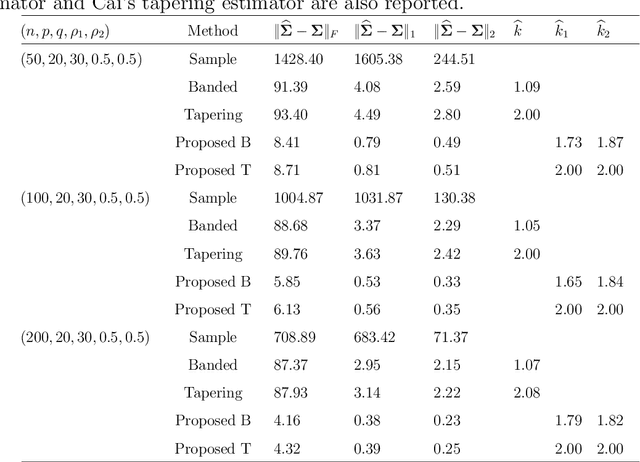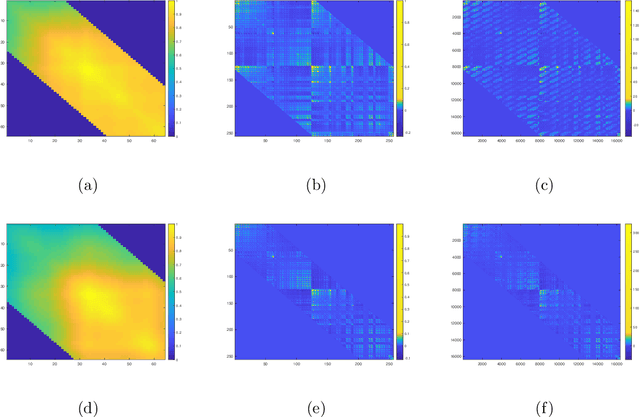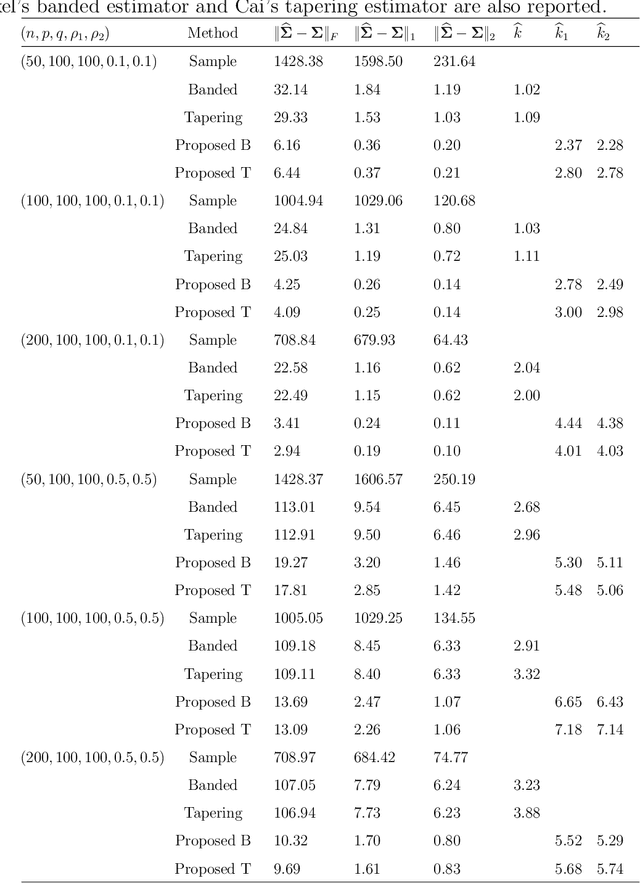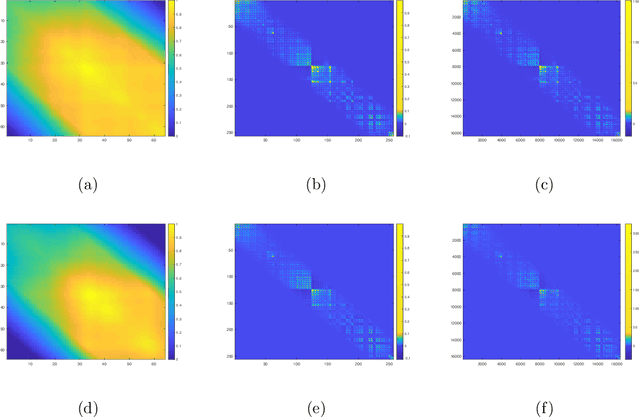Weining Shen
LightAgent: Production-level Open-source Agentic AI Framework
Sep 11, 2025Abstract:With the rapid advancement of large language models (LLMs), Multi-agent Systems (MAS) have achieved significant progress in various application scenarios. However, substantial challenges remain in designing versatile, robust, and efficient platforms for agent deployment. To address these limitations, we propose \textbf{LightAgent}, a lightweight yet powerful agentic framework, effectively resolving the trade-off between flexibility and simplicity found in existing frameworks. LightAgent integrates core functionalities such as Memory (mem0), Tools, and Tree of Thought (ToT), while maintaining an extremely lightweight structure. As a fully open-source solution, it seamlessly integrates with mainstream chat platforms, enabling developers to easily build self-learning agents. We have released LightAgent at \href{https://github.com/wxai-space/LightAgent}{https://github.com/wxai-space/LightAgent}
Time-Varying Home Field Advantage in Football: Learning from a Non-Stationary Causal Process
Jun 13, 2025Abstract:In sports analytics, home field advantage is a robust phenomenon where the home team wins more games than the away team. However, discovering the causal factors behind home field advantage presents unique challenges due to the non-stationary, time-varying environment of sports matches. In response, we propose a novel causal discovery method, DYnamic Non-stAtionary local M-estimatOrs (DYNAMO), to learn the time-varying causal structures of home field advantage. DYNAMO offers flexibility by integrating various loss functions, making it practical for learning linear and non-linear causal structures from a general class of non-stationary causal processes. By leveraging local information, we provide theoretical guarantees for the identifiability and estimation consistency of non-stationary causal structures without imposing additional assumptions. Simulation studies validate the efficacy of DYNAMO in recovering time-varying causal structures. We apply our method to high-resolution event data from the 2020-2021 and 2021-2022 English Premier League seasons, during which the former season had no audience presence. Our results reveal intriguing, time-varying, team-specific field advantages influenced by referee bias, which differ significantly with and without crowd support. Furthermore, the time-varying causal structures learned by our method improve goal prediction accuracy compared to existing methods.
From Images to Detection: Machine Learning for Blood Pattern Classification
Jan 04, 2025



Abstract:Bloodstain Pattern Analysis (BPA) helps us understand how bloodstains form, with a focus on their size, shape, and distribution. This aids in crime scene reconstruction and provides insight into victim positions and crime investigation. One challenge in BPA is distinguishing between different types of bloodstains, such as those from firearms, impacts, or other mechanisms. Our study focuses on differentiating impact spatter bloodstain patterns from gunshot bloodstain patterns. We distinguish patterns by extracting well-designed individual stain features, applying effective data consolidation methods, and selecting boosting classifiers. As a result, we have developed a model that excels in both accuracy and efficiency. In addition, we use outside data sources from previous studies to discuss the challenges and future directions for BPA.
SPORTU: A Comprehensive Sports Understanding Benchmark for Multimodal Large Language Models
Oct 11, 2024



Abstract:Multimodal Large Language Models (MLLMs) are advancing the ability to reason about complex sports scenarios by integrating textual and visual information. To comprehensively evaluate their capabilities, we introduce SPORTU, a benchmark designed to assess MLLMs across multi-level sports reasoning tasks. SPORTU comprises two key components: SPORTU-text, featuring 900 multiple-choice questions with human-annotated explanations for rule comprehension and strategy understanding. This component focuses on testing models' ability to reason about sports solely through question-answering (QA), without requiring visual inputs; SPORTU-video, consisting of 1,701 slow-motion video clips across 7 different sports and 12,048 QA pairs, designed to assess multi-level reasoning, from simple sports recognition to complex tasks like foul detection and rule application. We evaluate four prevalent LLMs mainly utilizing few-shot learning paradigms supplemented by chain-of-thought (CoT) prompting on the SPORTU-text part. We evaluate four LLMs using few-shot learning and chain-of-thought (CoT) prompting on SPORTU-text. GPT-4o achieves the highest accuracy of 71%, but still falls short of human-level performance, highlighting room for improvement in rule comprehension and reasoning. The evaluation for the SPORTU-video part includes 7 proprietary and 6 open-source MLLMs. Experiments show that models fall short on hard tasks that require deep reasoning and rule-based understanding. Claude-3.5-Sonnet performs the best with only 52.6% accuracy on the hard task, showing large room for improvement. We hope that SPORTU will serve as a critical step toward evaluating models' capabilities in sports understanding and reasoning.
Sports Intelligence: Assessing the Sports Understanding Capabilities of Language Models through Question Answering from Text to Video
Jun 21, 2024Abstract:Understanding sports is crucial for the advancement of Natural Language Processing (NLP) due to its intricate and dynamic nature. Reasoning over complex sports scenarios has posed significant challenges to current NLP technologies which require advanced cognitive capabilities. Toward addressing the limitations of existing benchmarks on sports understanding in the NLP field, we extensively evaluated mainstream large language models for various sports tasks. Our evaluation spans from simple queries on basic rules and historical facts to complex, context-specific reasoning, leveraging strategies from zero-shot to few-shot learning, and chain-of-thought techniques. In addition to unimodal analysis, we further assessed the sports reasoning capabilities of mainstream video language models to bridge the gap in multimodal sports understanding benchmarking. Our findings highlighted the critical challenges of sports understanding for NLP. We proposed a new benchmark based on a comprehensive overview of existing sports datasets and provided extensive error analysis which we hope can help identify future research priorities in this field.
Language and Multimodal Models in Sports: A Survey of Datasets and Applications
Jun 18, 2024

Abstract:Recent integration of Natural Language Processing (NLP) and multimodal models has advanced the field of sports analytics. This survey presents a comprehensive review of the datasets and applications driving these innovations post-2020. We overviewed and categorized datasets into three primary types: language-based, multimodal, and convertible datasets. Language-based and multimodal datasets are for tasks involving text or multimodality (e.g., text, video, audio), respectively. Convertible datasets, initially single-modal (video), can be enriched with additional annotations, such as explanations of actions and video descriptions, to become multimodal, offering future potential for richer and more diverse applications. Our study highlights the contributions of these datasets to various applications, from improving fan experiences to supporting tactical analysis and medical diagnostics. We also discuss the challenges and future directions in dataset development, emphasizing the need for diverse, high-quality data to support real-time processing and personalized user experiences. This survey provides a foundational resource for researchers and practitioners aiming to leverage NLP and multimodal models in sports, offering insights into current trends and future opportunities in the field.
SportQA: A Benchmark for Sports Understanding in Large Language Models
Feb 24, 2024



Abstract:A deep understanding of sports, a field rich in strategic and dynamic content, is crucial for advancing Natural Language Processing (NLP). This holds particular significance in the context of evaluating and advancing Large Language Models (LLMs), given the existing gap in specialized benchmarks. To bridge this gap, we introduce SportQA, a novel benchmark specifically designed for evaluating LLMs in the context of sports understanding. SportQA encompasses over 70,000 multiple-choice questions across three distinct difficulty levels, each targeting different aspects of sports knowledge from basic historical facts to intricate, scenario-based reasoning tasks. We conducted a thorough evaluation of prevalent LLMs, mainly utilizing few-shot learning paradigms supplemented by chain-of-thought (CoT) prompting. Our results reveal that while LLMs exhibit competent performance in basic sports knowledge, they struggle with more complex, scenario-based sports reasoning, lagging behind human expertise. The introduction of SportQA marks a significant step forward in NLP, offering a tool for assessing and enhancing sports understanding in LLMs.
Advanced Volleyball Stats for All Levels: Automatic Setting Tactic Detection and Classification with a Single Camera
Sep 26, 2023Abstract:This paper presents PathFinder and PathFinderPlus, two novel end-to-end computer vision frameworks designed specifically for advanced setting strategy classification in volleyball matches from a single camera view. Our frameworks combine setting ball trajectory recognition with a novel set trajectory classifier to generate comprehensive and advanced statistical data. This approach offers a fresh perspective for in-game analysis and surpasses the current level of granularity in volleyball statistics. In comparison to existing methods used in our baseline PathFinder framework, our proposed ball trajectory detection methodology in PathFinderPlus exhibits superior performance for classifying setting tactics under various game conditions. This robustness is particularly advantageous in handling complex game situations and accommodating different camera angles. Additionally, our study introduces an innovative algorithm for automatic identification of the opposing team's right-side (opposite) hitter's current row (front or back) during gameplay, providing critical insights for tactical analysis. The successful demonstration of our single-camera system's feasibility and benefits makes high-level technical analysis accessible to volleyball enthusiasts of all skill levels and resource availability. Furthermore, the computational efficiency of our system allows for real-time deployment, enabling in-game strategy analysis and on-the-spot gameplan adjustments.
Covariance Estimation for Matrix-valued Data
Apr 11, 2020



Abstract:Covariance estimation for matrix-valued data has received an increasing interest in applications including neuroscience and environmental studies. Unlike previous works that rely heavily on matrix normal distribution assumption and the requirement of fixed matrix size, we propose a class of distribution-free regularized covariance estimation methods for high-dimensional matrix data under a separability condition and a bandable covariance structure. Under these conditions, the original covariance matrix is decomposed into a Kronecker product of two bandable small covariance matrices representing the variability over row and column directions. We formulate a unified framework for estimating the banded and tapering covariance, and introduce an efficient algorithm based on rank one unconstrained Kronecker product approximation. The convergence rates of the proposed estimators are studied and compared to the ones for the usual vector-valued data. We further introduce a class of robust covariance estimators and provide theoretical guarantees to deal with the potential heavy-tailed data. We demonstrate the superior finite-sample performance of our methods using simulations and real applications from an electroencephalography study and a gridded temperature anomalies dataset.
Matrix Linear Discriminant Analysis
Sep 24, 2018


Abstract:We propose a novel linear discriminant analysis approach for the classification of high-dimensional matrix-valued data that commonly arises from imaging studies. Motivated by the equivalence of the conventional linear discriminant analysis and the ordinary least squares, we consider an efficient nuclear norm penalized regression that encourages a low-rank structure. Theoretical properties including a non-asymptotic risk bound and a rank consistency result are established. Simulation studies and an application to electroencephalography data show the superior performance of the proposed method over the existing approaches.
 Add to Chrome
Add to Chrome Add to Firefox
Add to Firefox Add to Edge
Add to Edge